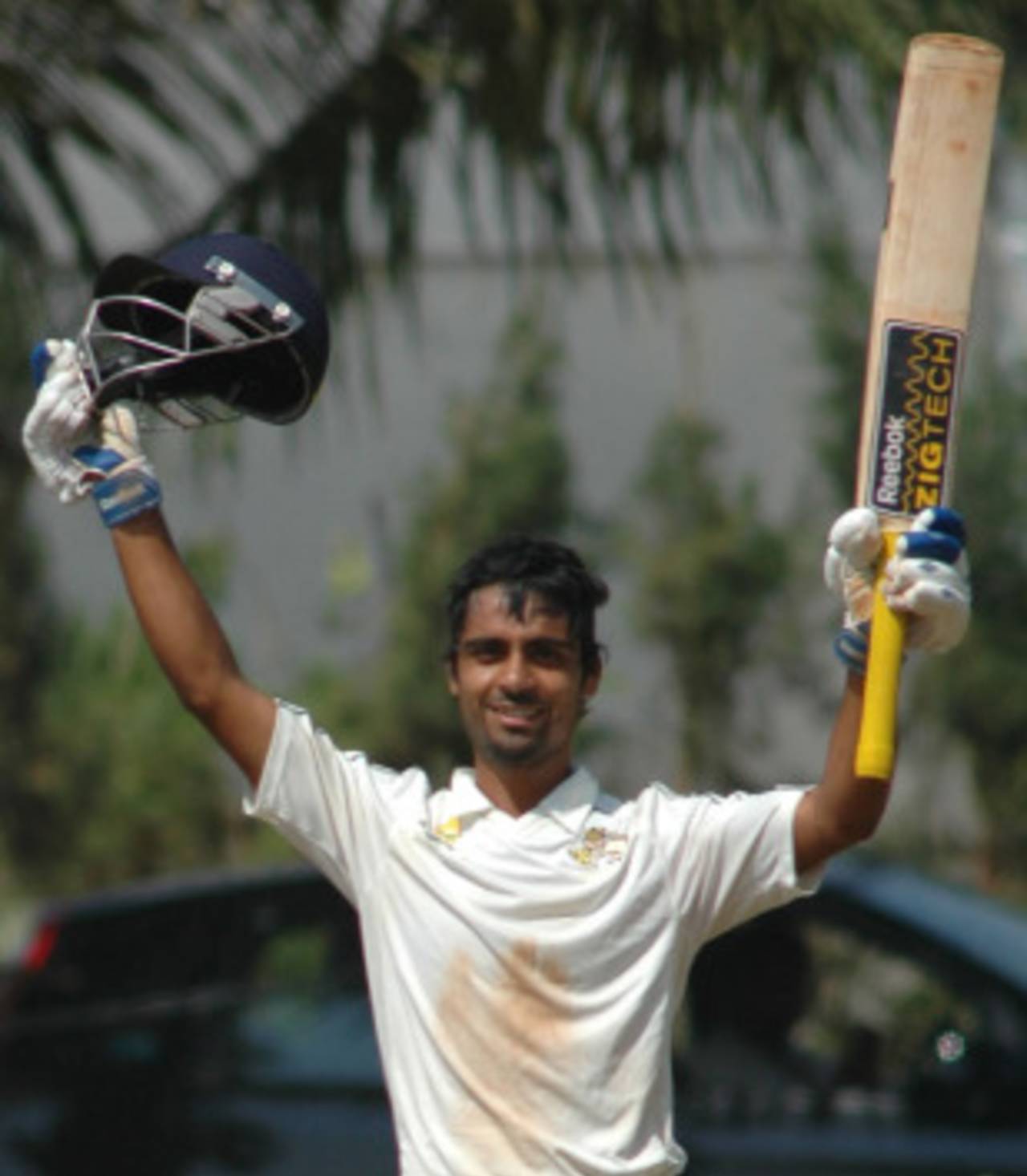In the Ranji Trophy match between Gujarat and Mumbai last week,
Iqbal Abdulla and Ramesh Powar didn't bowl much in the first innings as the damage had been done by the three fast bowlers. It was only when the pitch started crumbling in the second innings that Abdulla was allowed a lengthier spell, and picked up wickets. The game summed up his role in the side: a bowling all-rounder, somebody who can bowl a few overs when the fast bowlers get tired, take centre stage only on a breaking turner, and bat competently otherwise.
Abdulla is part of the larger trend in domestic cricket where the spinner is taken out off the attack the moment he is hit for some runs. This is not a new phenomenon. The art of spin underwent a major change through the nineties when three-day cricket was followed by the one-dayer, a period when a classical spinner gave way to someone more defensive.
The pressure to change and stay effective pulled the plugs on imparting revolutions onto the ball. M Venkatramana, a former Tamil Nadu offspinner, is a perfect example. He was an old-fashioned spinner, but slowly he had to get into the containing mould in one-day cricket. And when he couldn't contain and was smashed around, he lost the heart to spin the ball. Steadily, almost all the spinners in the country have ended up altering their actions, and in certain cases they have started using their elbows more than their shoulders and wrists.
Another significant change came around the same period in Indian domestic cricket was when the SG ball was introduced. It supported reverse-swing. This further reduced the opportunities for the traditional spinner.
The role of the captain cannot be overstated either. This is about managing a resource that is fast diminishing, but captains remain insensitive. In my days, a spinner required about seven to eight overs to get into a rhythm. They were depended on as match-winners and not partnership-breakers.
Piyush Chawla is one of those who could do with a more understanding captain. He has little or no meaningful support from Mohammad Kaif. I feel bad for Chawla: there have been catches dropped off his bowling, and as soon as he goes for runs in his initial few overs, he is removed from the attack.
I felt that Chawla had turned a corner after his county stint at Sussex last year. He bowled really well against Sourav Ganguly in Kanpur in a Ranji match. The pitch was not doing much, but he troubled Ganguly and was confident to flight the ball. A year later, everything seems lost.
There are two ways to look at his case. One, he does not have an understanding captain who supports him. The other is that the spinner has himself lost confidence in his ability to go through the transition from wanting to restrict to looking to buy wickets.
A traditional spinner is not likely to be successful today. The ones who dart the ball in are likely to survive because when they bowl long spells, they often do so on worn-out tracks. Otherwise they try to slip in short quiet spells that give the other bowlers a breather. Abdulla falls in this category.
Modern spinners such as Abdulla wait for the footmarks to develop or the pitch to deteriorate. They prefer to be patient as their role has been limited. The pitches, relatively a large percentage of them in domestic cricket, remain scratch proof. This has made them think about improving their batting skills to survive. Sadly captains and coaches are only encouraging such a trend.
With their defensive ways, spinners at the moment are forced to find new ways other than their batting to survive. Hence the innovations of the doosra, the carrom ball, and the twitch in the elbow to cause deception.
If today's youngsters really want to fall back on the right path, they need not look any further than Anil Kumble. Initially Kumble was only good on breaking pitches, but after years of experience he was willing to throw the ball up, and he developed a googly. It is another thing that he was a great mind and an aggressive competitor who was willing to learn the right things, and duly evolved. He should be the modern Indian spinner's inspiration.
A former Tamil Nadu opening batsman, VB Chandrasekhar played seven ODIs for India and was a member of the national selection committee from 2004-06
